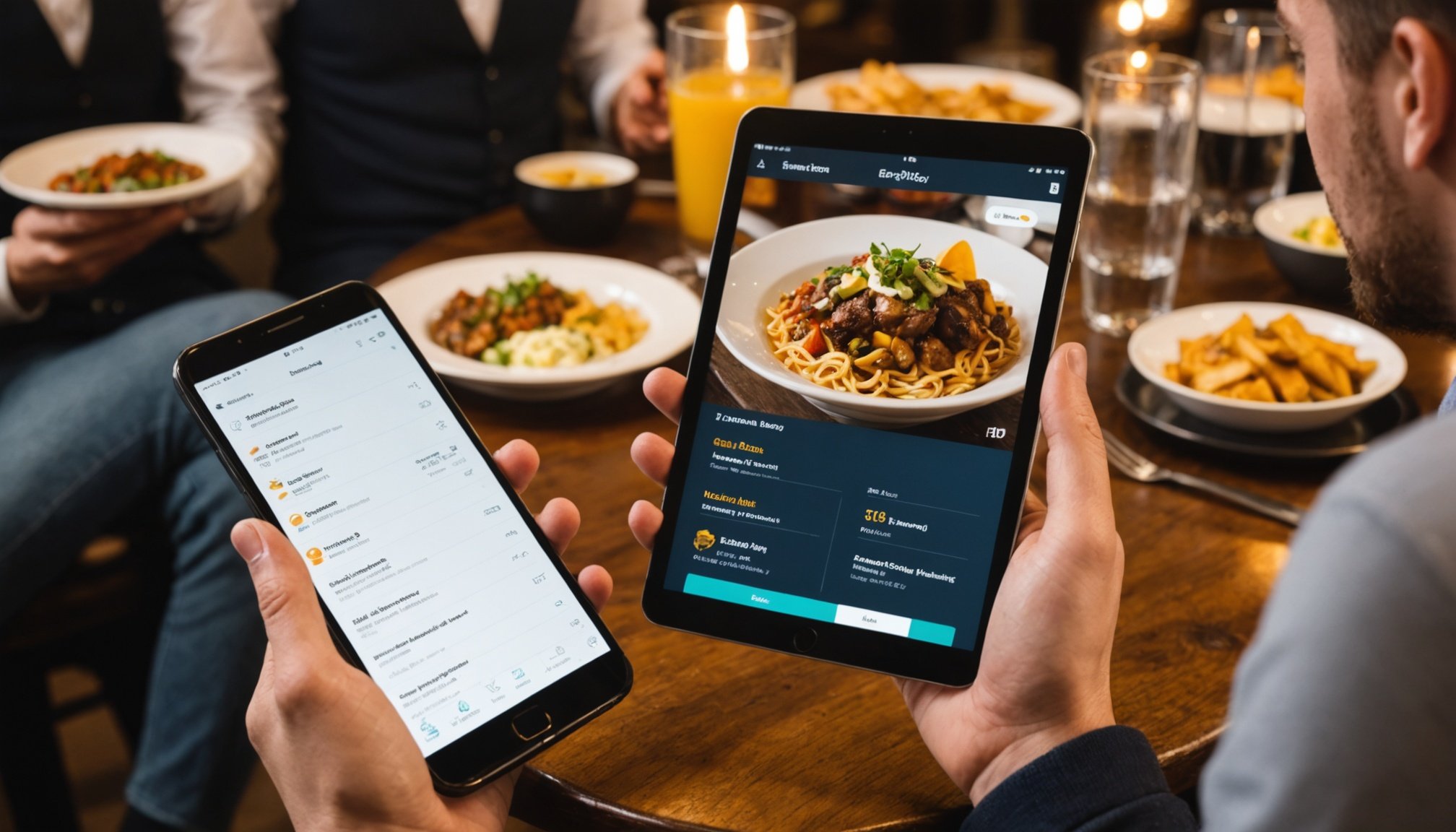Importance of Data Analytics in Menu Pricing
In the fast-paced restaurant industry, data analytics plays a crucial role in crafting effective menu pricing strategies. By analysing sales data and customer behaviour, restaurants can set competitive prices that enhance both customer satisfaction and restaurant profitability. Businesses that rely on data-driven insights not only meet market demands but also create a competitive edge.
Restaurants use data analytics to gain a deep understanding of customer preferences, leading to informed pricing decisions that boost customer engagement. It allows for the fine-tuning of prices based on factors like demand shifts and competitor pricing, ensuring the menu remains attractive to patrons while maximising profits.
Also read : Unlocking Retail Success: Innovative Augmented Reality Tactics for UK Shops
Successful case studies demonstrate how data analytics can transform a restaurant’s pricing approach. For instance, one establishment improved turnover by analysing customer purchase patterns and adjusting prices accordingly, leading to increased profitability without sacrificing customer loyalty. Similarly, another restaurant leveraged data to identify the most popular menu items, allowing them to optimise pricing for these dishes and maximise returns.
Such evidence highlights the indispensable value of data analytics in navigating the complex world of menu pricing and achieving sustainable success.
Also to read : Revitalizing UK Non-Profits: Breakthrough Crowdsourcing Strategies for Effective Fundraising
Key Metrics to Consider for Pricing Decisions
Understanding essential pricing metrics is vital for making informed menu pricing strategies. These metrics offer insights into cost analysis and sales performance, pivotal for enhancing restaurant profitability.
Food Cost Percentage
A crucial metric, Food Cost Percentage, indicates what portion of revenue is consumed by food costs. Calculating it involves dividing the cost of ingredients by the menu price, then multiplying by 100. Lower percentages suggest more operational efficiency, allowing restaurants to either increase their margins or offer competitive pricing.
Contribution Margin
Contribution Margin represents the remaining revenue after variable costs. It’s calculated by subtracting the food cost from the selling price. A higher contribution margin means a more profitable item. Understanding this helps restaurants focus on high-margin dishes, boosting overall profitability.
Sales Velocity
Sales Velocity examines how quickly items are sold over a period. To compute this, divide total units sold by the time period. High velocity indicates customer preference, guiding menu refinement and inventory management. By leveraging sales velocity, restaurants can identify popular items and adjust their strategies to maximise sales potential. This proactive approach ensures dishes align with customer demand and business goals.
Tools and Software for Data-Driven Pricing
In today’s competitive restaurant landscape, employing pricing software and data analysis tools is crucial for effective menu pricing strategies. These restaurant management systems empower establishments to maximize profits and remain adaptable to market changes.
One popular tool is Menu Engineering Software, which helps restaurants analyse sales data to identify top-performing dishes. This allows for strategic pricing adjustments that enhance restaurant profitability. By highlighting which items yield the highest margins, restaurateurs can focus marketing efforts and promotions on those products.
Meanwhile, Predictive Analytics tools provide insights into future trends, enabling proactive changes in pricing to align with customer demand. This foresight can prevent potential revenue losses during low seasons.
User reviews often commend these tools for their intuitive interfaces and data-rich insights. For instance, a case study from a London-based restaurant demonstrated a 15% profit increase within a year after implementing integrated pricing software. The software allowed them to fine-tune their pricing based on customer feedback and competitive research.
Incorporating these technologies simplifies complex data analysis tasks, making them accessible for managers and helping them make informed decisions with confidence. As technology evolves, embracing such solutions becomes indispensable for maintaining an edge in the restaurant industry.
Analyzing Customer Preferences and Market Trends
Understanding customer behaviour is pivotal for informed menu pricing strategies. Gathering customer insights allows restaurants to tailor offerings to match patron expectations, enhancing both customer satisfaction and restaurant profitability. By analysing purchase patterns, eateries can adjust menu items to align with consumer preferences, thus staying competitive in a dynamic market.
Understanding Customer Buying Behavior
A profound grasp of customer buying behaviour aids in anticipating trends and designing appealing menu options. Techniques such as surveys and feedback forms provide direct insights into customer desires. Tracking purchase history allows for the identification of popular items, guiding strategic modifications to menu pricing and offerings.
Seasonal Trends and Seasonal Pricing
Adapting to seasonal trends is crucial for maintaining relevance and attractiveness. Seasonal pricing leverages demand fluctuations—offering discounts during low demand periods and premium pricing when demand peaks. Such adjustments ensure that pricing strategies remain effective year-round, catering to predictable and cyclical market changes.
Competitor Pricing Strategies
Competitive benchmarking involves evaluating and responding to rivals’ pricing tactics. Identifying competitors’ successful approaches and integrating similar strategies helps restaurants maintain an edge. Tools like market analysis software assist in monitoring competitor moves, enabling timely adjustments to pricing and promotions that satisfy customer needs while maximizing profits.
Implementing Dynamic Pricing Strategies
In the competitive restaurant landscape, dynamic pricing emerges as a game-changer for revenue management. It’s a strategy that involves adjusting pricing in real-time based on varying factors such as demand, customer segments, and timing. Understanding its applications can significantly enhance restaurant profitability.
Dynamic pricing allows restaurants to maximise revenue by setting higher prices during peak periods and offering discounts during slumps. This flexible approach ensures that the business capitalises on demand fluctuations, aligning pricing with customer willingness to pay. For instance, pricing could be adjusted for weekends, holidays, or even for high-demand menu items during a specific time of the day.
Benefits of adopting such pricing strategies extend beyond revenue; they improve customer satisfaction through perceived value differences. Tailoring prices for different customer segments caters to diverse needs, creating a personalised dining experience.
Real-world examples demonstrate the efficacy of dynamic pricing. Some restaurants have observed significant profit gains after implementing this method, with one reporting a 20% increase in revenue during high-demand seasons. Such case studies highlight how strategic pricing adjustments can create a balanced approach to customer engagement and financial growth.
Measuring the Success of Pricing Strategies
Evaluating the effectiveness of pricing strategies in restaurants requires a keen eye on key performance indicators (KPIs) and ongoing data monitoring. This ensures that adjustments are data-driven and lead to sustainable ROI (Return on Investment).
Establishing Key Performance Indicators (KPIs)
Setting KPIs is vital in assessing pricing strategy success. Common KPIs include sales growth, profit margins, and customer retention rates. They provide measurable targets, helping restaurants track performance and make informed pricing adjustments.
Ongoing Data Monitoring Practices
Consistent monitoring of pricing performance allows for timely insights. Tools that support real-time tracking of sales, customer preferences, and market trends empower restaurants to stay ahead. By observing these metrics, establishments can quickly adapt to changes, maintaining competitiveness.
Adjusting Strategies Based on Feedback
Gathering continuous feedback from customers and staff refines pricing strategies. Employing feedback loops aids in identifying areas for improvement. This data-driven approach helps restaurants tweak offerings, ensuring they meet customer expectations and maintain profitability. By embracing adjustments based on reliable data, restaurateurs can enhance their pricing effectiveness, ultimately achieving better financial outcomes.











